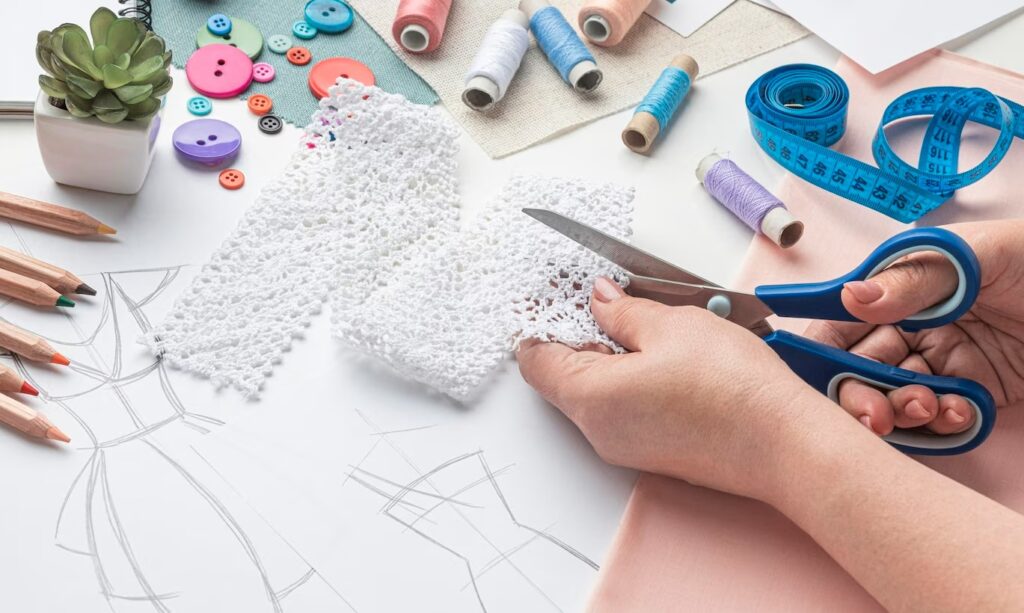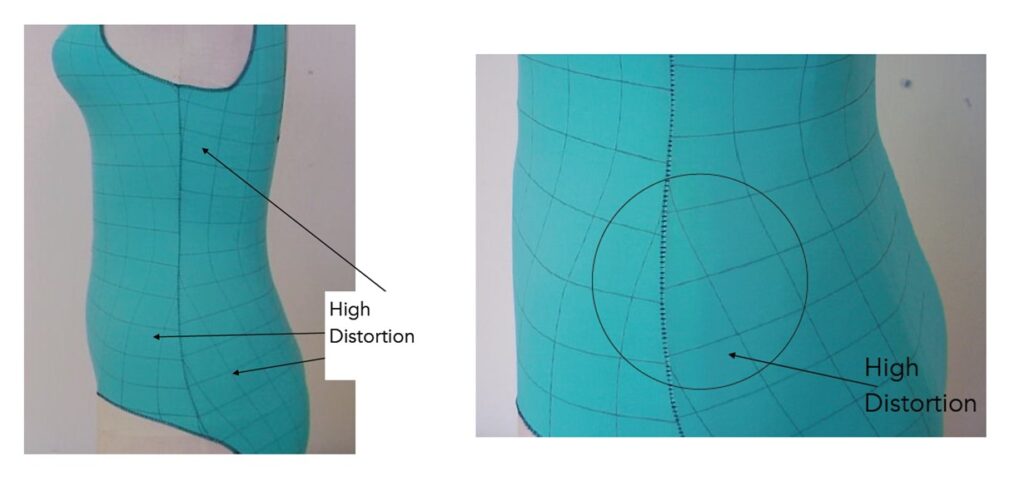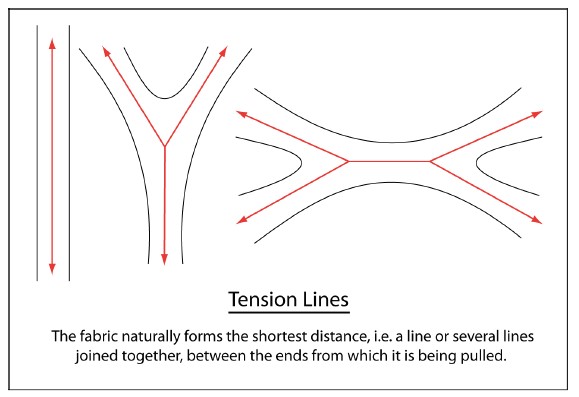
MASTERING THE ART
Pattern Cutting for Bodies
Pattern cutting is a fundamental aspect of creating well-fitting and visually appealing garments. When it comes to the intimate apparel industry, understanding the principles of pattern cutting for bodies becomes even more crucial. In this article, we will explore key concepts and techniques that start-ups and entrepreneurs in the intimate apparel industry should be familiar with to create successful patterns. Let’s dive in!

Prior to embarking on drafting or adapting basic body blocks, it is essential to cultivate a deep understanding of the fundamental principles of stretch pattern cutting that are directly applicable to bodies. This knowledge is equally valuable for designers who work with established blocks but rely on trial and error and fitting on the body. Understanding and applying these principles from the start enables the creation of more successful patterns and enhances the ability to identify and address cutting issues efficiently. It forms the foundation for a seamless pattern creation process.
NEGATIVE EASE: EMBRACING THE STRETCH
Let’s talk about ease. You know how non-stretch patterns add extra fabric for volume? Well, with stretch patterns, we do the opposite! It’s called negative ease, and it’s all about creating a snug, comfortable fit. We want your garments to hug those beautiful curves!

SOFT AND HARD STRETCH: A BALANCING ACT
Now, let’s get acquainted with the concept of soft and hard stretch. Imagine you’re stretching a sample of body wear fabric. At first, it feels like a cosy, gentle stretch. But as you pull further, it gets tougher, and the fabric edges start to curl. That’s the hard stretch! We want to design patterns that rely on the workable soft stretch for a comfortable and perfectly sized garment.
CORRECTING TENSIONS AND RIPPLES
No one wants unsightly ripples on their bodies, right? So, let’s tackle those tension issues. When two-way stretch fabrics are stretched too much in the wrong direction, those pesky parallel ripples appear. But fear not! We can fix this by rebalancing tensions. Adjusting the fabric to have greater horizontal and vertical tensions helps smooth things out and gives your garments that flawless finish.

UNDERSTANDING BODYWEAR FABRIC PROPERTIES
Now, let’s take a closer look at the fabric itself. It’s time to mark a grid on that lovely material. This grid will be your guide to cutting the bodies accurately. It also lets you spot areas of high fabric distortion caused by overstretching. Knowledge is power, and we’re empowering you to create amazing designs!

MANAGING FABRIC DISTORTION IN COMPLEX PATTERNS
Simple bodysuits are fantastic, but they present a challenge when it comes to reducing areas of overstretching. So, let’s get a bit more adventurous with our pattern shapes! Incorporating cup sections for the bust and body seaming gives you more control. You’ll be able to balance out those over-stretched areas and achieve a better fit. Say goodbye to fabric distortion and hello to perfection!
THE IMPORTANCE OF TENSION LINES
Tension lines are the guiding force behind a perfectly fitted garment. They ensure that fabrics embrace the body with grace and maintain their position against it. Elasticated hems, body contours, and cut-outs all contribute to tension lines. By understanding their interactions, you can orchestrate a symphony of fit, where each element works in harmony to create a masterpiece of design. Embrace tension lines as the backbone of your intimate apparel creations, and watch as your designs captivate with their flawless fit.

Mastering the art of pattern cutting for bodies in the intimate apparel industry empowers start-ups and entrepreneurs to create exceptional garments. By understanding factors like stretch fabrics, negative ease, tension lines, and fabric properties, you can design well-fitting and comfortable pieces that captivate customers. Let your passion for precision and creativity shape the future of intimate apparel. Happy pattern cutting!
